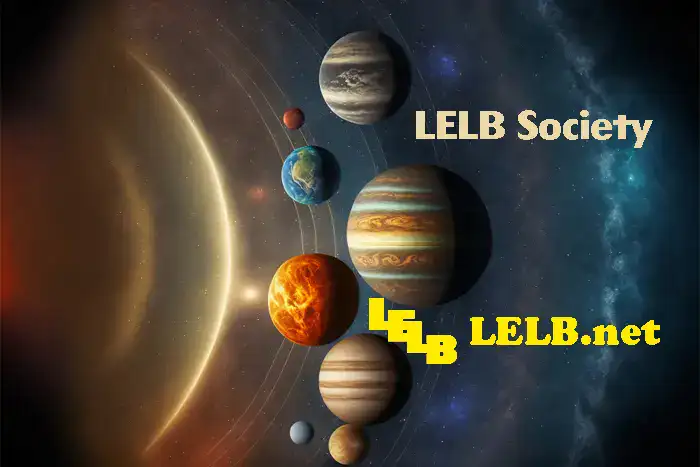English Documentary on Neptune with Transcript & Flashcards to make your listening and reading comprehension better and enrich your academic vocabulary
Source of documentary: National Geographic YouTube Channel
The farthest world
Along the dark edges of the Solar System, it floats. Anchored by a star but barely graced by its warmth, this traveler drifts alone as deceptively calm and elusive as the deep blue sea.
Neptune is the eighth planet from the Sun. At about 30 times the distance between our star and the Earth, or 30 astronomical units, Neptune is the most distant planet in our Solar System. This distance creates the longest orbit of the eight worlds, about 165 years, with the seasons lasting a little over 40 Earth years each. Being so far away from the heat and light of the Sun, Neptune is cold, dark, and icy.
The ocean planet
At its heart is a solid core about 1.5 times the size of Earth. Making up about 45% of the planet’s mass, the core is made of water ice and silicate rock. The rest of the planet is believed to be a hot pressurized ocean of water, methane, and ammonia ices surrounded by a layer of clouds. Theses clouds, predominantly made of hydrogen and helium, include traces of methane, which give this ocean world its rich blue color.
While the clouds create a cool, calm veneer from afar, up close, they’re whipped around by the most severe weather in the Solar System. Winds on the planet which speeds of over 1,200 miles per hour, nearly five times faster than the strongest winds recorded on Earth. In fact, the winds are so powerful that they break the sound barrier. Drifting high about this windy ice giant is a quiet ecosystem of rings and satellites. Six rings encircle the planet, with some containing ring arcs, or clusters of dust particles in a ring.
The icy world is yet to be fully discovered
Also revolving around the planet are fourteen known moons, with the largest called Triton. Named after the son of the ancient Greek sea god, Triton has ice volcanos and may even contain a subsurface ocean.
Much is left to be discovered about Neptune, its rings and its moons. Only one spacecraft, Voyager 2 has visited these cosmic bodies, but future missions to this mysterious icy world have even more stories to tell.




Hi Dr.Hariri, I have a question:
What does this part of the sentence mean? : ( break sound barrier)
What happens if sound barrier breaks?
Hi Armaghan,
Breaking the sound barrier in physics means to travel faster than the speed of sound, which is approximately 350 meters per second. Generally, sound travels through air at this speed / rate, that is, 350 meters per second. If something moves faster than this limit, we say that it has broken the sound barrier.
Usually, in military contexts, some aircrafts or fighters are said to be supersonic fighters as they overtake the speed of sound. However, in this context, it is mentioned that the winds speed on Neptune is technically supersonic as it breaks the sound barrier.
Thanks for your answer.
You’re always welcome.
Answers to the questions:
1. Neptune is blue in color because its clouds include traces of methane.
2. It is because the distance between Neptune and Sun is much more than the distance between The Earth and Sun, which is about 30 times the distance between our star and the Earth.
That is absolutely right. Thank you so much.
Just please answer the questions as a REPLY, but hitting the REPLY button to refer to them more easily. This is because unlike fresh comments, replies are indented / nested or threaded, hence more recognizable.
Yeah, sorry. I totally forgot that I can reply to comments.
That’s OK.
Why is Neptune totally blue in color?
Why is a year on Neptune so long lasting around 165 years on Earth?
The farthest world
Along the dark edges of the Solar System, it floats. Anchored by a star but barely graced by its warmth, this traveler drifts alone as deceptively calm and elusive as the deep blue sea. Neptune is the eighth planet from the Sun. At about thirty times the distance between our star and the Earth, or thirty astronomical units, Neptune is the most distant planet in our Solar System. This distance creates the longest orbit of the eight worlds, about 165 years, with the seasons lasting a little over 40 Earth years each. Being so far away from the heat and light of the Sun, Neptune is cold, dark, and icy.
The ocean planet
At its heart is a solid core about 1.5 times the size of Earth. Making up about 45% of the planet’s mass, the core is made of water ice and silicate rock. The rest of the planet is believed to be a hot pressurized ocean of water, methane, and ammonia ices surrounded by a layer of clouds. Theses clouds, predominantly made of hydrogen and helium, includes traces of methane, which give this ocean world its rich blue color. While the clouds create a cool, calm veneer from afar, up close, they’re whipped around by the most severe weather in the Solar System. Winds on the planet which speeds of over 1,200 miles per hour, nearly five times faster than the strongest winds recorded on Earth. In fact, the winds are so powerful that they break the sound barrier. Drifting high about this windy ice giant is a quiet ecosystem of rings and satellites. Six rings encircle the planet, with some containing ring arcs, or clusters of dust particles in a ring.
The icy world is yet to be fully discovered
Also revolving around the planet are fourteen known moons, with the largest called Triton. Named after the son of the ancient Greek sea god, Triton has ice volcanos and may even contain a surface ocean. Much is left to be discovered about Neptune, its rings and its moons. Only one spacecraft, Voyager 2 has visited these cosmic bodies, but future missions to this mysterious icy world but have even more stories to tell.
Thank you so much for your almost perfect transcription with the following minor errors sequentially ordered:
* include traces of methane (not includes)
* contain a subsurface ocean (not surface)
* but have even more: would have even more